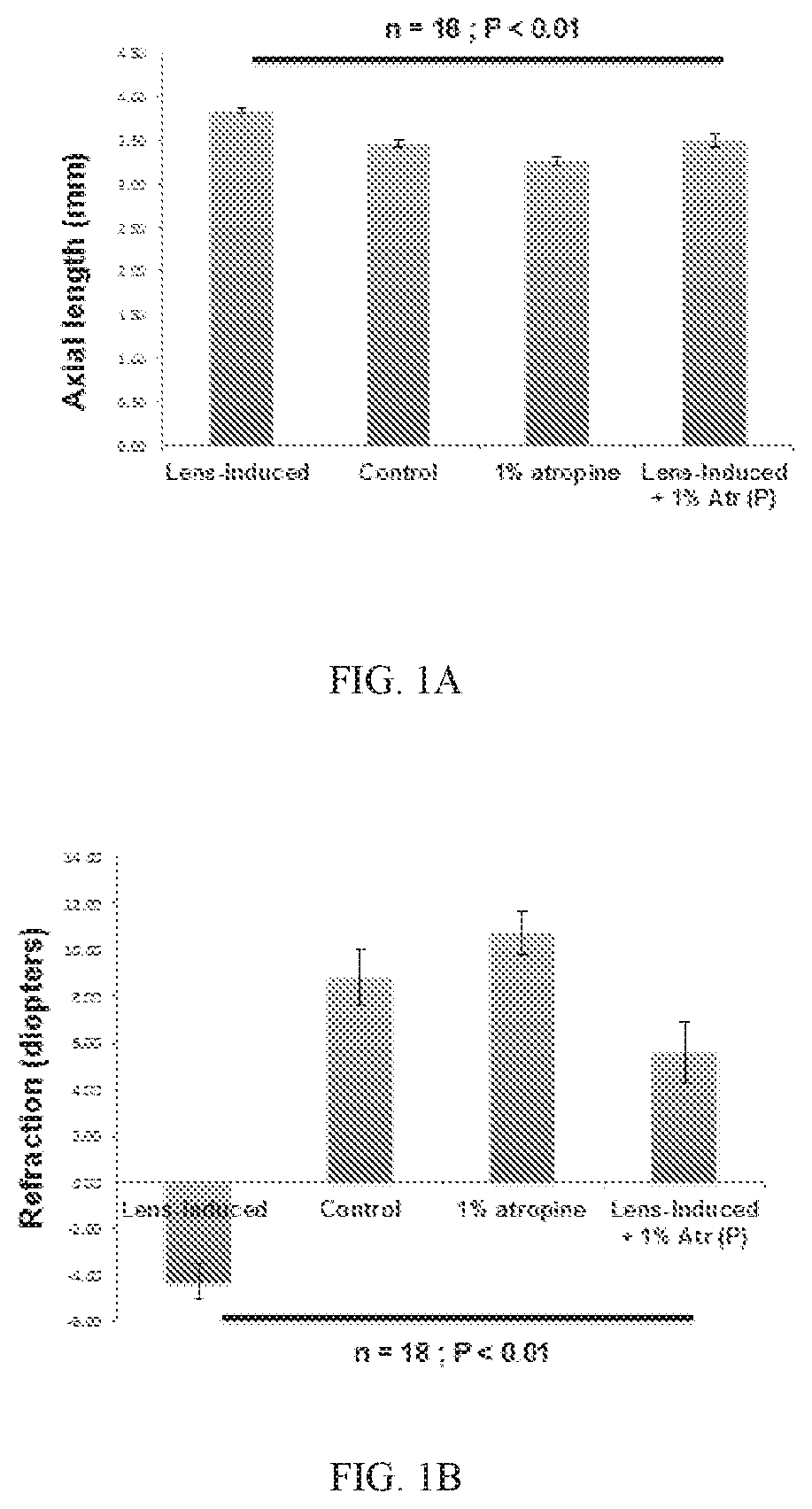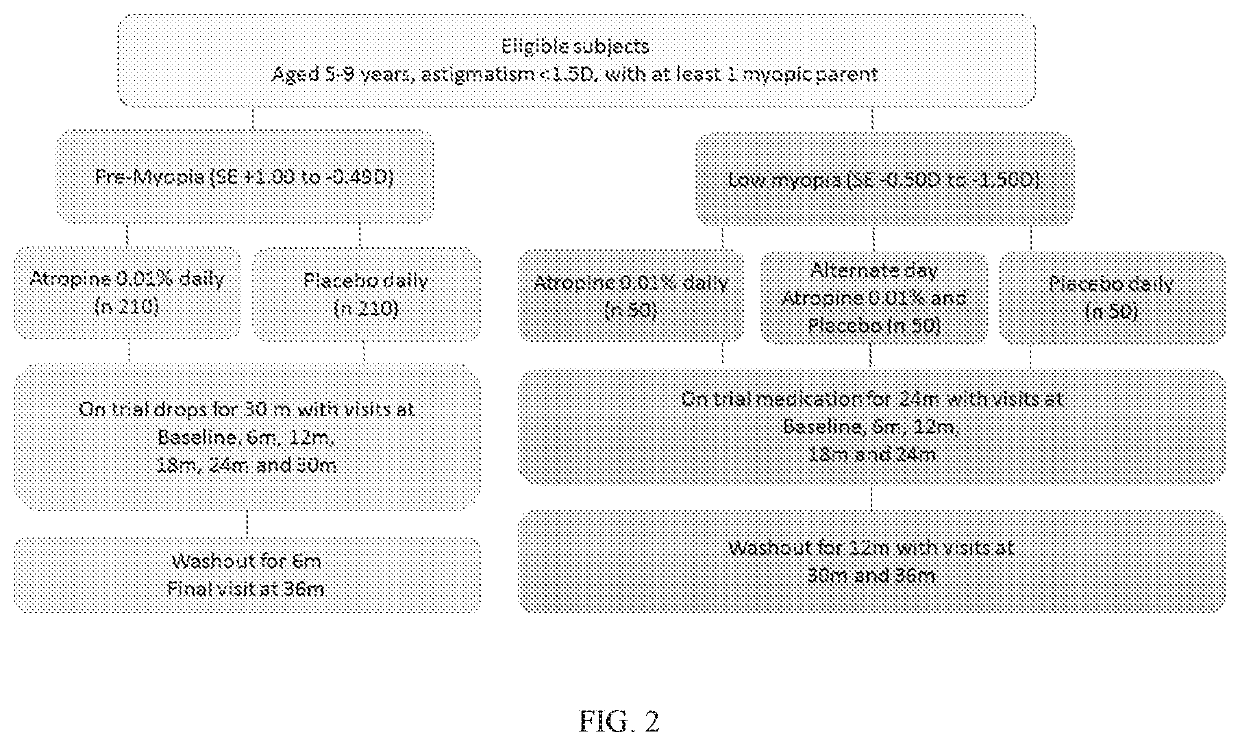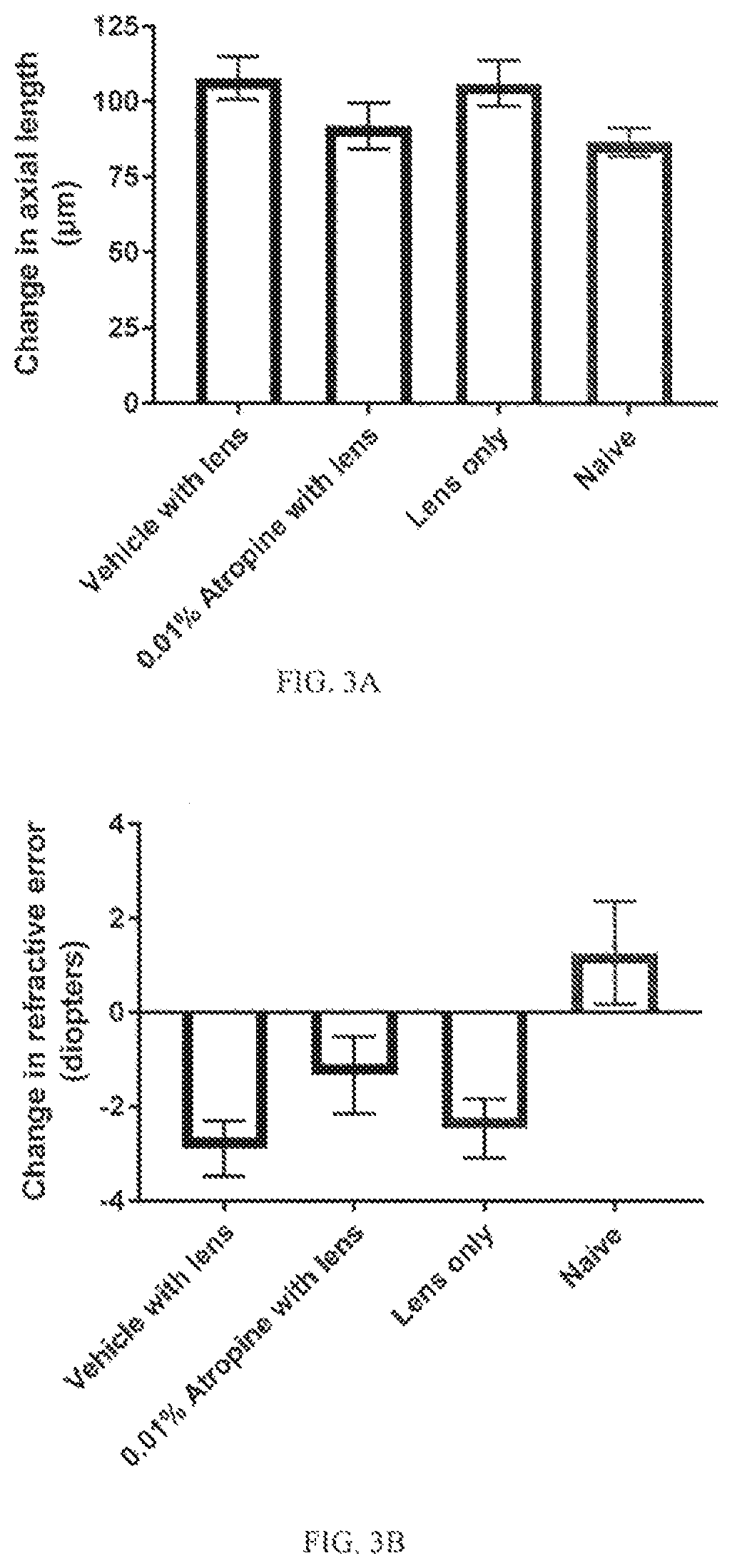Composition and method for preventing or delaying onset of myopia comprising atropine
a technology of atropine and compound, applied in the field can solve the problems of visual loss later in life, blurred vision of distant objects, etc., and achieve the effect of preventing or delaying the onset of myopia and reducing the progression of myopia
- Summary
- Abstract
- Description
- Claims
- Application Information
AI Technical Summary
Benefits of technology
Problems solved by technology
Method used
Image
Examples
example 1
Inducing Form Deprivation Myopia in Mouse
[0080]Mouse is a good preclinical model to evaluate pharmacological treatments for myopia since the mouse eye has a very similar structure and biochemistry as the human eye, and previous studies have confirmed of the mouse model of myopia. The mouse eye also has pharmacological targets similar to those in the human eye. The results showed that Atropine given topically prior to the eye experiencing a procedure to induce myopia can avert some or all of the myopic changes. It has been shown that the relevant all of muscarinic receptor types in the fibroblasts of the tough outer connective tissue coating of the eye, the sclera are similar for the mouse eye and the human eye.
[0081]In general, form deprivation myopia (“FDM”) in the mouse can be reliably created by attaching a −10 D lens over the mouse eye for 6 weeks. This causes an increase in axial length and refractive error of the mouse eye. In this procedure, the eyes will be treated with atro...
example 2
Effect of Atropine Eye Drops Prior to Inducing Form Deprivation Myopia in a Mouse Model
[0083]Methods:
[0084]Animals: Breeding pair B6J (Mus musculus) mice were obtained from Jackson Lab and produced offspring. Naive control animals were housed in groups of 6 while experimental animals were housed individually in standard mouse cages after 21 days of age at 25° C. on a schedule of 12:12 h of light on and off with mouse pellets and water available ad libidum. Approval was obtained from the SingHealth Institutional Animal Care and Use of Committee (IACUC) and all procedures performed in this study complied with the Association of Research in Vision and Ophthalmology (ARVO) Statement for the Use of Animals in Ophthalmology and Vision Research.
[0085]Murine Myopia Model: A −10 D contact lens (PMMA Contact Lens in Grey Tint, 8.5 mm diameter, 8 mm base curve, refractive Index: 1.43, axial thickness: 0.5 mm) was placed over the right eye on day 21 by gluing to an annulus of velcro, and then a...
example 3
Effect of 0.01% Atropine in Mouse Model
[0096]Methods
[0097]Animals: Three weeks old C57BL / 6J mice were purchased from InVivos, Singapore and were held at the animal holding unit of SingHealth Experimental Medicine Centre. The experimental animals were housed individually in standard mouse cages at 25° C. on a schedule of 12:12 h of light on (325 lx) and off (0 lx), with mouse pellets and water available ad libidum. All the procedures performed in this study complied with the Association of Research in Vision and Ophthalmology (ARVO) Statement for the Use of Animals in Ophthalmic and Vision Research and were approved by SingHealth IACUC. Both the eyes of each animal were screened for the ophthalmic abnormalities, such as corneal opacities and anterior polar cataracts. Animals with any form of ophthalmic abnormality were removed from the study (around 10%).
[0098]Mouse model of experimental myopia: Spectacle lens-induced myopia model was established by placing −15 D hard lens on the rig...
PUM
| Property | Measurement | Unit |
|---|---|---|
| intraocular pressure | aaaaa | aaaaa |
| time | aaaaa | aaaaa |
| axial thickness | aaaaa | aaaaa |
Abstract
Description
Claims
Application Information
 Login to View More
Login to View More - R&D
- Intellectual Property
- Life Sciences
- Materials
- Tech Scout
- Unparalleled Data Quality
- Higher Quality Content
- 60% Fewer Hallucinations
Browse by: Latest US Patents, China's latest patents, Technical Efficacy Thesaurus, Application Domain, Technology Topic, Popular Technical Reports.
© 2025 PatSnap. All rights reserved.Legal|Privacy policy|Modern Slavery Act Transparency Statement|Sitemap|About US| Contact US: help@patsnap.com



